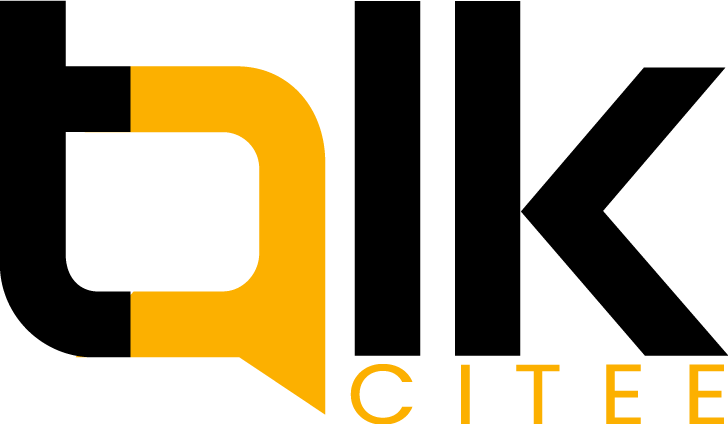
How to Prevent Burnout in Hybrid Work Culture
It was a chilly Monday morning when I stared at my laptop, feeling like I was running on empty. Working from home part-time and dashing to the office for meetings had blurred the lines between work and life. The constant ping of emails and the pressure to be “always on” left me drained. I wasn’t alone. Many of us in hybrid work cultures face this struggle. Burnout creeps in silently, threatening our productivity and well-being. However, with the right strategies, we can prevent burnout in hybrid work culture and reclaim balance. This blog post shares practical, human-centered tips to help you thrive in this new work landscape, woven with my own journey to spark trust and connection.
Burnout in Hybrid Work
Burnout isn’t just feeling tired; it’s a state of emotional, mental, and physical exhaustion. In hybrid work, the mix of remote and in-office demands creates unique challenges. You might feel pressured to prove your productivity at home while juggling office expectations. According to a 2023 Gallup study, 29% of hybrid workers reported high levels of burnout, compared to 24% of fully remote workers. The constant context-switching—Zoom calls, in-person meetings, and home distractions—wears us down.
For me, burnout showed up as irritability and trouble focusing. I’d work late to “catch up,” only to feel more overwhelmed. Recognizing burnout is the first step. Symptoms include chronic fatigue, cynicism, and reduced performance. Hybrid work amplifies these due to unclear boundaries and communication overload. Understanding this helps us take action. Start by noticing when you feel drained or detached. Journaling your energy levels daily can reveal patterns. Awareness sets the stage for change, letting you address burnout before it spirals.
Setting Clear Work-Life Boundaries
Boundaries are your shield against burnout. In hybrid work, it’s easy to let work bleed into personal time. Without a commute to signal the end of the day, you might answer emails at 10 p.m. I fell into this trap, checking Slack during dinner until I realized it was stealing my peace. Setting boundaries changed everything.
Create a dedicated workspace, even if it’s a corner of your kitchen. When you’re done, close your laptop to signal “work’s over.” Set specific work hours and stick to them. Communicate these to your team to manage expectations. For example, I told my colleagues I’m offline after 6 p.m. unless it’s urgent. Additionally, use tools like calendar blocks to protect personal time. If you’re in the office, leave on time to avoid overworking. These steps create mental space, reducing stress. According to the World Health Organization, poor work-life balance contributes to burnout for 15% of global workers. Clear boundaries are non-negotiable for long-term well-being.
Prioritizing Time Management
Time management is a game-changer in hybrid work. Without it, tasks pile up, and stress skyrockets. I used to multitask, thinking it made me efficient, but it left me frazzled. Effective time management means working smarter, not harder. Start with the Pomodoro Technique: work for 25 minutes, then take a 5-minute break. This boosts focus and prevents mental fatigue.
Plan your week by prioritizing high-impact tasks. Use tools like Trello or Notion to organize projects. I block my mornings for deep work and save meetings for afternoons when my energy dips. In the office, group collaborative tasks to maximize face-to-face time. At home, minimize distractions by silencing non-urgent notifications. A 2022 study by Asana found that workers waste 58% of their day on low-value tasks. Avoid this by reviewing your to-do list daily. Delegate when possible, and don’t overcommit. Good time management frees up space for rest, which is critical to preventing burnout.
Common Mistakes That Fuel Burnout
Hybrid work can trick us into habits that invite burnout. Here are mistakes to avoid:
- Skipping breaks: Working through lunch reduces energy and focus.
- Overloading schedules: Saying yes to every task leads to overwhelm.
- Ignoring boundaries: Answering emails at midnight blurs work-life lines.
- Neglecting self-care: Skipping exercise or sleep harms mental health.
- Poor communication: Unclear expectations with teams cause stress.
- Multitasking: Juggling tasks lowers efficiency and increases errors.
Avoid these by setting realistic goals and checking in with yourself regularly. Small changes, like taking a 10-minute walk, make a big difference.
Nurturing Mental and Physical Health
Your health is the foundation of resilience. Hybrid work can disrupt routines, making self-care critical. I learned this the hard way when skipping workouts left me sluggish. Physical activity, even a 20-minute walk, boosts mood and energy. The American Psychological Association notes that regular exercise reduces stress for 62% of workers.
Eat balanced meals to fuel your body. I keep healthy snacks like nuts and fruit handy to avoid energy crashes. Sleep is non-negotiable—aim for 7-8 hours nightly. Mental health matters too. Practice mindfulness or journaling to process stress. I spend 10 minutes meditating before bed, which calms my mind. If you’re struggling, consider therapy or apps like Headspace. In the office, step away for fresh air during breaks. At home, create a wind-down routine, like reading, to transition from work. Prioritizing health builds stamina to handle hybrid work’s demands.
Building Strong Communication with Teams
Communication is the glue in hybrid work. Misunderstandings or unclear expectations can pile on stress. I once missed a deadline because I didn’t clarify a task’s priority, which left me scrambling. Strong communication prevents this. Start with regular check-ins. Weekly team meetings, whether virtual or in-person, align everyone.
Be clear about your availability. If you’re working remotely, update your status on Slack or Teams. In the office, have quick stand-up meetings to sync on goals. Use tools like Microsoft Teams for seamless collaboration. Additionally, over-communicate when needed—confirm deadlines or deliverables to avoid confusion. Encourage open feedback to address issues early. For example, I now ask my manager for clarity on urgent tasks. Good communication reduces pressure and fosters trust, creating a supportive environment that buffers against burnout.
Tips to Stay Energized in Hybrid Work
Here are practical tips to keep burnout at bay:
- Schedule downtime: Block time for hobbies or relaxation daily.
- Set tech boundaries: Turn off notifications after work hours.
- Take micro-breaks: Stretch or breathe deeply every hour.
- Connect socially: Chat with colleagues to build camaraderie.
- Celebrate wins: Acknowledge small achievements to stay motivated.
- Review goals: Adjust workloads weekly to avoid overwhelm.
- Seek support: Talk to a mentor or HR if stress builds.
These habits recharge you, making hybrid work sustainable.
Leveraging Flexibility in Hybrid Work
Hybrid work’s biggest perk is flexibility. Use it to design a schedule that suits your energy. I’m a morning person, so I tackle creative tasks early and save routine work for later. Flexibility lets you align work with your natural rhythms. For example, if you focus better at home, reserve office days for meetings.
Negotiate with your employer to customize your hybrid setup. Some companies allow split schedules, like three days in-office and two remote. Use this to balance collaboration and quiet time. However, don’t let flexibility lead to overworking. Set limits to protect your downtime. Flexibility also means adjusting when life gets hectic. If you’re feeling stretched, shift low-priority tasks. Embracing this freedom empowers you to work efficiently while preserving energy, a key defense against burnout.
Knowing When to Seek Help
Sometimes, burnout feels too big to handle alone. I hit this point last year, feeling constantly overwhelmed despite my efforts. Recognizing when to seek help is crucial. Signs include persistent anxiety, trouble sleeping, or disengagement from work and life. Don’t ignore these.
Talk to your manager about workload concerns. Many companies offer employee assistance programs (EAPs) with counseling services. Online therapy platforms like BetterHelp are also accessible. Additionally, confide in trusted colleagues or friends—they might share strategies that worked for them. If burnout affects your health, consult a doctor or therapist. Seeking help isn’t weakness; it’s a proactive step to recover.
Conclusion
Preventing burnout in hybrid work culture is about intentional taking charge of your time, health, and boundaries. My journey taught me that small, intentional steps—like setting boundaries and prioritizing self-care—can transform overwhelm into balance. You don’t have to let hybrid work drain you. Use these strategies to stay energized and productive. Start today by setting one boundary or taking a short break. Your well-being matters. Share your favorite tip in the comments or spread the word by sharing this post with a colleague. Together, we can make hybrid work work for us.
FAQs
What is burnout in hybrid work?
Burnout is emotional, mental, and physical exhaustion from prolonged stress, worsened by hybrid work’s blurred boundaries and task-switching.
How can I set boundaries in hybrid work?
Create a dedicated workspace, set work hours, communicate availability, and use calendar blocks to protect personal time.
Why is time management important to prevent burnout?
Good time management, like using the Pomodoro Technique, boosts focus and frees up rest time, reducing stress.
What are signs I need help with burnout?
Persistent anxiety, trouble sleeping, or disengagement signal it’s time to talk to a manager or seek therapy.
How does flexibility help prevent burnout?
Flexibility lets you align work with your energy, like scheduling deep work at peak times, preserving stamina.







